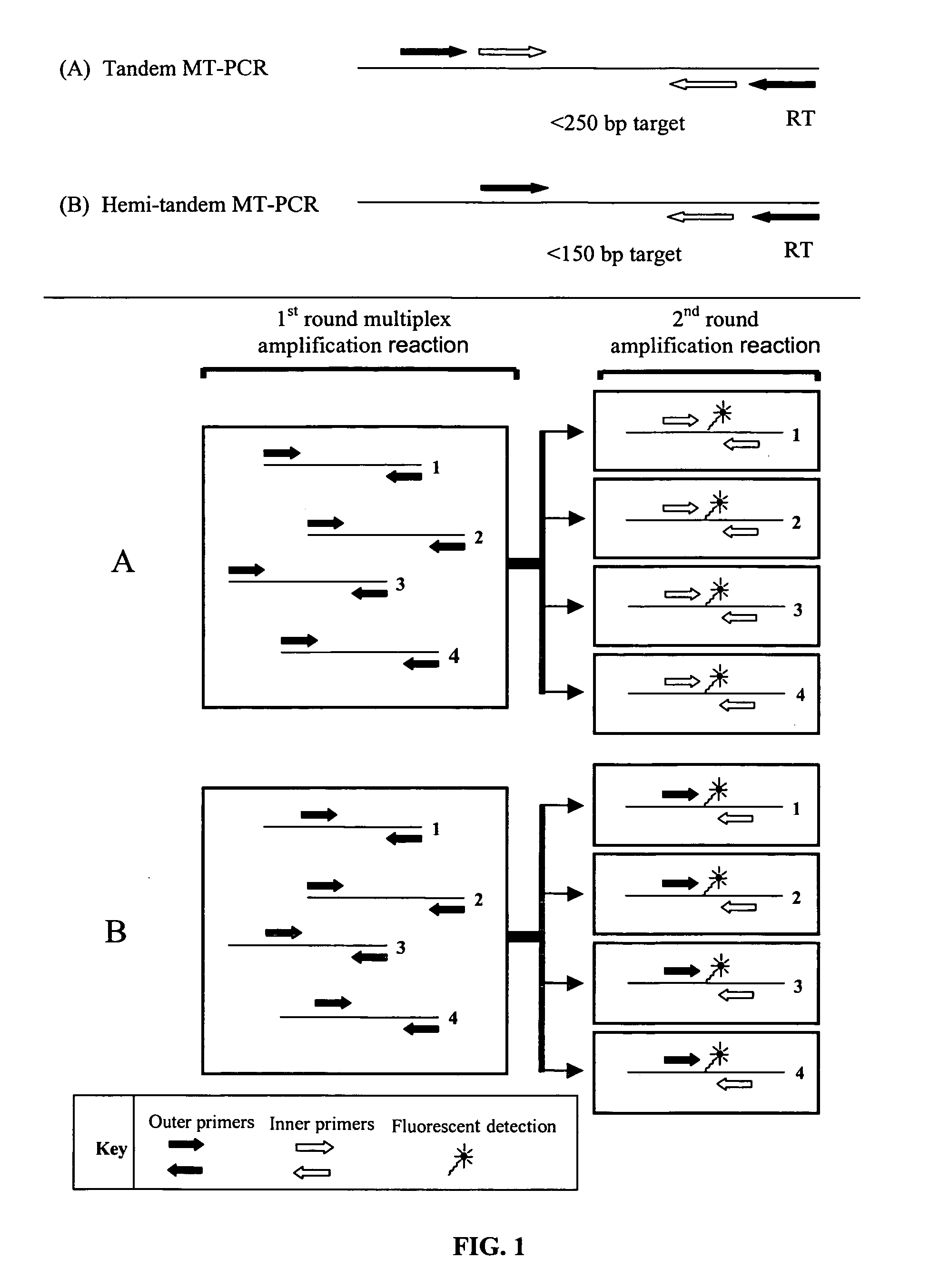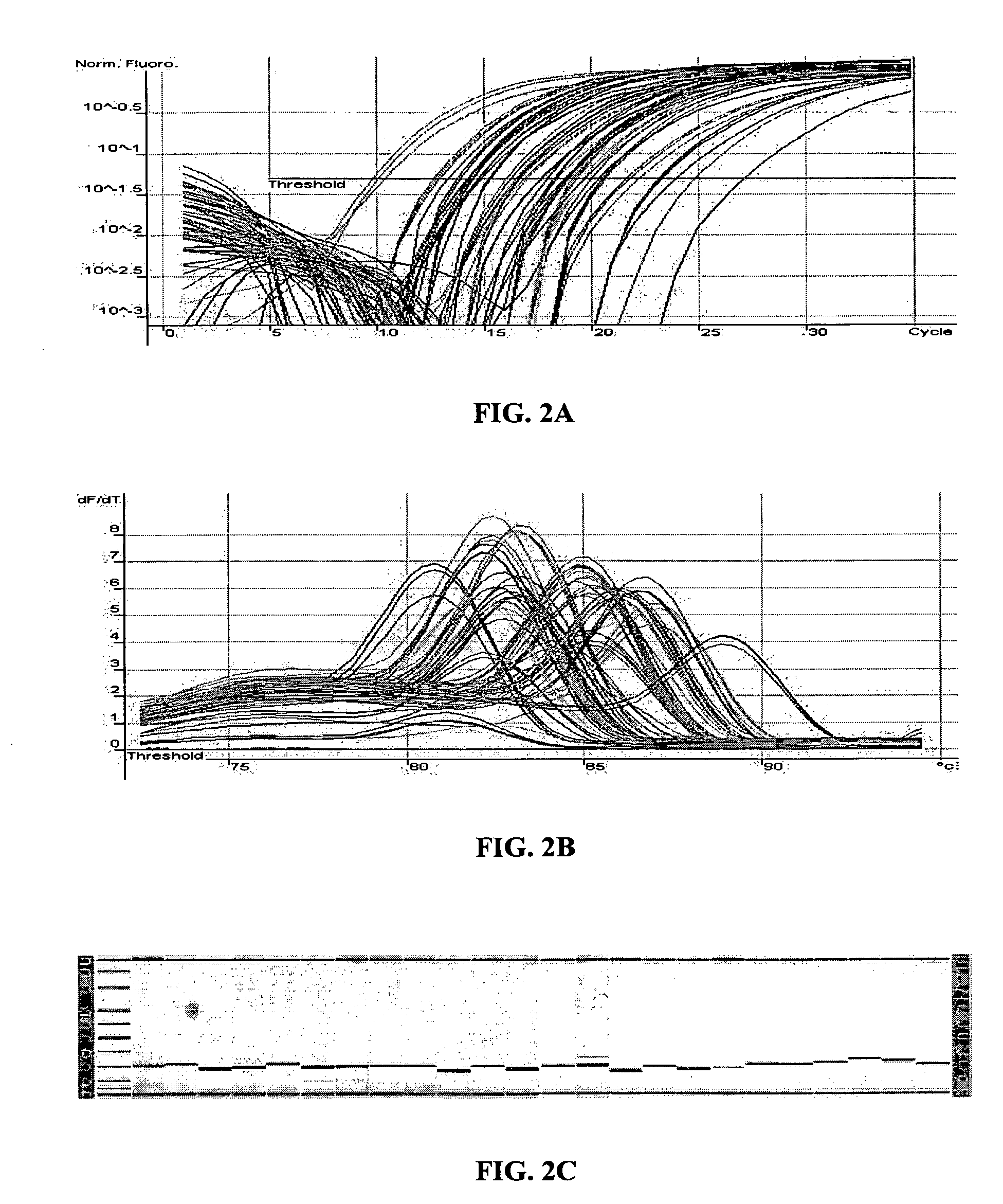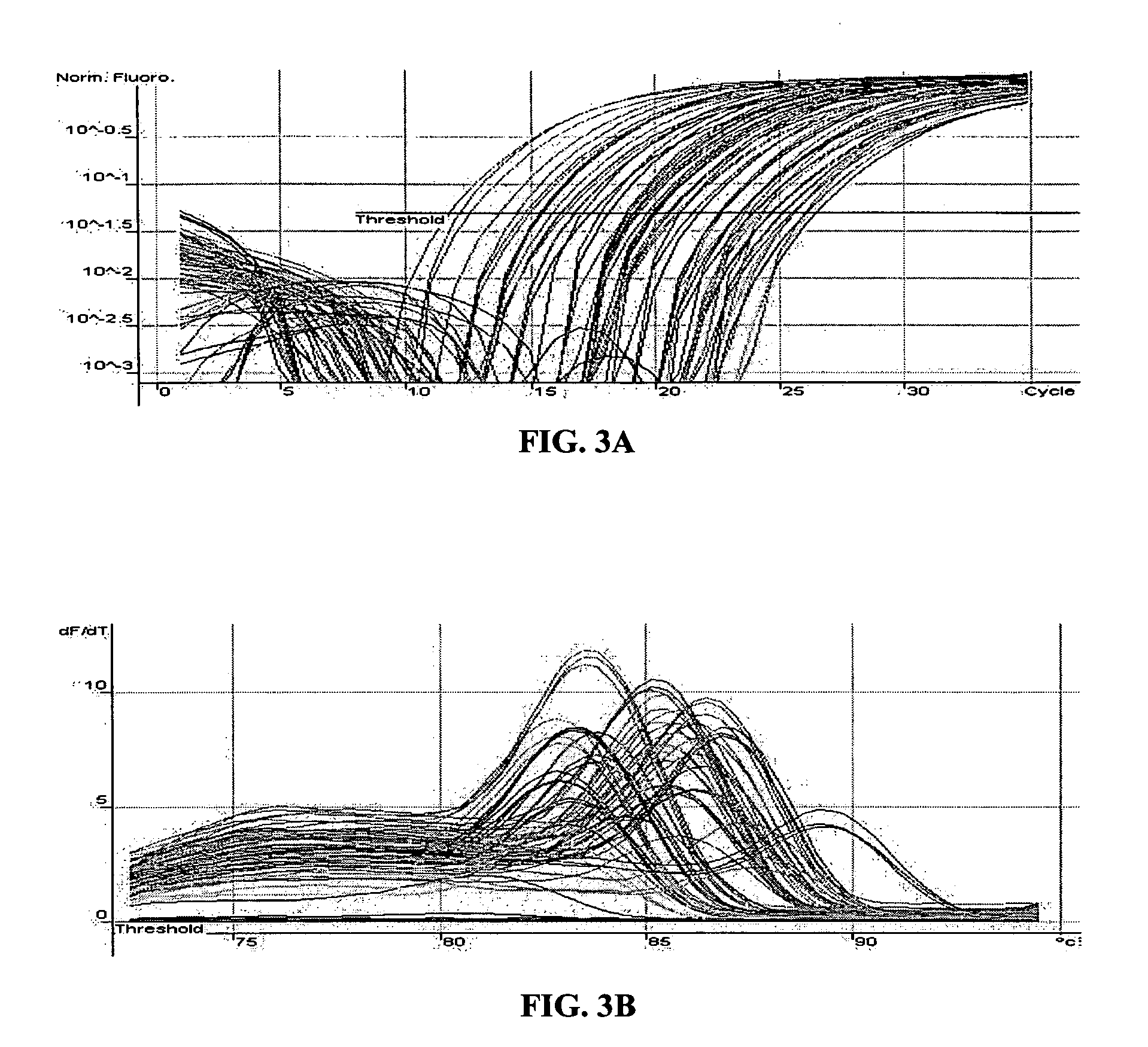Methods for the amplification, quantitation and identification of nucleic acids
a nucleic acid and quantification technology, applied in the field of nucleic acid amplification, identification, and quantification, can solve the problems of complex analysis of these products, difficult accurate quantification of gene expression, and more difficult, so as to prevent contamination of the second round amplification reaction, minimise the effect of competition, and improve the effect of digestion
- Summary
- Abstract
- Description
- Claims
- Application Information
AI Technical Summary
Benefits of technology
Problems solved by technology
Method used
Image
Examples
example 1
MT-PCR May be Used to Measure the Expression of Many Different Genes Using Multiplex Amplification from a Single Sample and Incorporating a SYBR-Green detection System in the Second Round of Amplification
[0155] The multiplex amplification and measurement of multiple gene expression products using a generic reporter such as SYBR-green reporter dye is currently not possible. However, the MT-PCR method is capable of amplifying the expression products of many genes simultaneously. The MT-PCR method is outlined in FIG. 1 as a Schematic diagram showing the arrangement of primers in MT-PCR, illustrating both the tandem and hemi-tandem embodiments. The reverse outer primer, indicated as “RT”, is typically used to prime the synthesis of cDNA, specific to each gene during the reverse transcription reaction prior to the amplification reactions illustrated. Both methods are shown in the process of amplifying and quantifying the gene expression products of 4 distinct genes (1-4), although in pr...
example 2
MT-PCR May be Used to Quantify Nucleic Acids, Such as Gene Expression Products, from Small Samples of Fragmented Nucleic Acids Such as Those Found in Archival FFPE Tissue Samples
[0158] The quantification of gene expression from archival formalin-fixed paraffin-embedded (FFPE) samples is highly desirable, but limited by the low recovery of RNA from these specimens (about 10 ng per 10 μm section) and by the highly fragmented nature of the recovered molecules. It is not possible to perform linear RNA amplification or reverse transcription using oligo-dT primer as it is unlikely that any RNA fragment will contain both the 3′ end of the RNA and the amplicon that is going to be measured. Thus current protocols only allow for the quantification of expression of a very small number of genes from each sample using gene specific or random primed reverse transcription.
[0159] In order to demonstrate that the MT-PCR method is particularly effective in amplifying many genes simultaneously from ...
example 3
The Use of MT-PCR for the Amplification and Quantification of Nucleic Acids from Microsamples Obtained from Single Cells and Laser Dissections
[0160] The MT-PCR method was used, which included 20 cycles of multiplex amplification in order to amplify and quantify the expression products of 24 genes using a sample of only 10 μg of RNA which is equivalent to the approximate amount of total RNA template that is typically obtained from a single mammalian cell. FIG. 4A shows the quantitation of 24 genes from 10 pg of MCF7 RNA and FIG. 4B shows the corresponding melt curves for each amplification product. 20 out of the 24 gene expression products were detected and quantified, without unwanted secondary amplification products. This result illustrates that the method can be effectively used to amplify many different nucleic acid sequences from a very small amount of nucleic acid template, such as that obtained from single cells, laser dissected tissue biopsies, forensic samples and the like....
PUM
| Property | Measurement | Unit |
|---|---|---|
| Temperature | aaaaa | aaaaa |
| Temperature | aaaaa | aaaaa |
| Angle | aaaaa | aaaaa |
Abstract
Description
Claims
Application Information
 Login to View More
Login to View More - R&D
- Intellectual Property
- Life Sciences
- Materials
- Tech Scout
- Unparalleled Data Quality
- Higher Quality Content
- 60% Fewer Hallucinations
Browse by: Latest US Patents, China's latest patents, Technical Efficacy Thesaurus, Application Domain, Technology Topic, Popular Technical Reports.
© 2025 PatSnap. All rights reserved.Legal|Privacy policy|Modern Slavery Act Transparency Statement|Sitemap|About US| Contact US: help@patsnap.com



